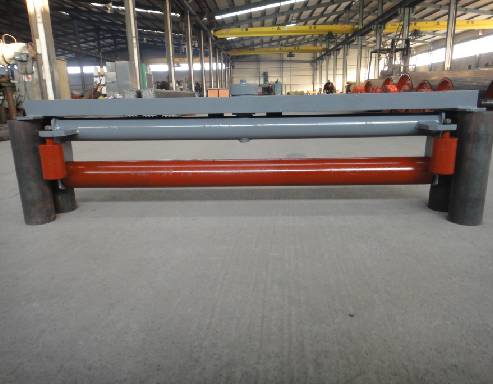 Afrikaans
Afrikaans  Albanian
Albanian  Amharic
Amharic  Arabic
Arabic  Armenian
Armenian  Azerbaijani
Azerbaijani  Basque
Basque  Belarusian
Belarusian  Bengali
Bengali  Bosnian
Bosnian  Bulgarian
Bulgarian  Catalan
Catalan  Cebuano
Cebuano  Corsican
Corsican  Croatian
Croatian  Czech
Czech  Danish
Danish  Dutch
Dutch  English
English  Esperanto
Esperanto  Estonian
Estonian  Finnish
Finnish  French
French  Frisian
Frisian  Galician
Galician  Georgian
Georgian  German
German  Greek
Greek  Gujarati
Gujarati  Haitian Creole
Haitian Creole  hausa
hausa  hawaiian
hawaiian  Hebrew
Hebrew  Hindi
Hindi  Miao
Miao  Hungarian
Hungarian  Icelandic
Icelandic  igbo
igbo  Indonesian
Indonesian  irish
irish  Italian
Italian  Japanese
Japanese  Javanese
Javanese  Kannada
Kannada  kazakh
kazakh  Khmer
Khmer  Rwandese
Rwandese  Korean
Korean  Kurdish
Kurdish  Kyrgyz
Kyrgyz  Lao
Lao  Latin
Latin  Latvian
Latvian  Lithuanian
Lithuanian  Luxembourgish
Luxembourgish  Macedonian
Macedonian  Malgashi
Malgashi  Malay
Malay  Malayalam
Malayalam  Maltese
Maltese  Maori
Maori  Marathi
Marathi  Mongolian
Mongolian  Myanmar
Myanmar  Nepali
Nepali  Norwegian
Norwegian  Norwegian
Norwegian  Occitan
Occitan  Pashto
Pashto  Persian
Persian  Polish
Polish  Portuguese
Portuguese  Punjabi
Punjabi  Romanian
Romanian  Russian
Russian  Samoan
Samoan  Scottish Gaelic
Scottish Gaelic  Serbian
Serbian  Sesotho
Sesotho  Shona
Shona  Sindhi
Sindhi  Sinhala
Sinhala  Slovak
Slovak  Slovenian
Slovenian  Somali
Somali  Spanish
Spanish  Sundanese
Sundanese  Swahili
Swahili  Swedish
Swedish  Tagalog
Tagalog  Tajik
Tajik  Tamil
Tamil  Tatar
Tatar  Telugu
Telugu  Thai
Thai  Turkish
Turkish  Turkmen
Turkmen  Ukrainian
Ukrainian  Urdu
Urdu  Uighur
Uighur  Uzbek
Uzbek  Vietnamese
Vietnamese  Welsh
Welsh  Bantu
Bantu  Yiddish
Yiddish  Yoruba
Yoruba  Zulu
Zulu belt and pulley drive
Understanding Belt and Pulley Drive Systems
Belt and pulley drive systems are integral components in various machines and mechanisms, serving to transfer motion and power between shafts. They are widely utilized in industrial applications, automotive machinery, and even household appliances due to their efficiency and reliability.
At its core, a belt and pulley system consists of two or more pulleys connected by a belt. The basic operation involves one pulley driving the belt, which in turn drives the other pulley. This setup can transmit rotational motion and torque, making it an essential mechanism in many engineering applications.
Components of Belt and Pulley Systems
The primary components of a belt and pulley drive system include pulleys, belts, and sometimes tensioners. Pulleys can be constructed from various materials, including metal and plastic, providing flexibility in terms of weight, durability, and cost. The belt itself, which can be made from materials such as rubber, leather, or synthetic composites, is crucial for transmitting the force generated by the motor to the driven pulley.
Types of Belts
belt and pulley drive

There are several types of belts, including flat belts, V-belts, and timing belts. Flat belts are commonly used for their simplicity and ease of alignment, often found in conveyor systems. V-belts, with their trapezoidal cross-section, offer enhanced grip and reduced slippage, making them ideal for applications requiring higher torque transmission. Timing belts, featuring teeth that fit into corresponding grooves on the pulleys, ensure precise synchronization, making them essential in engines and robotics.
Advantages of Belt and Pulley Systems
Belt and pulley systems offer several advantages. They can efficiently transfer power over a distance and can accommodate misalignment between shafts. Additionally, they are quieter than gear systems and can operate without lubrication, which reduces maintenance requirements. Their ability to absorb shock loads mitigates stress on connected components, enhancing overall system longevity.
Applications
These systems are ubiquitous in various fields. In the automotive industry, they are employed to drive accessories such as alternators and water pumps. In manufacturing, belt and pulley drives are pivotal in conveyor systems and machinery like lathes and mills. Their versatility extends to household appliances like washing machines and microwave turntables, where motion is required.
In conclusion, belt and pulley drive systems are vital for efficient motion and power transmission across numerous applications. Their combination of functionality, reliability, and ease of maintenance makes them an enduring choice in mechanical design and engineering. Understanding how they work can provide valuable insights for both technicians and engineers alike.
-
Revolutionizing Conveyor Reliability with Advanced Rubber Lagging PulleysNewsJul.22,2025
-
Powering Precision and Durability with Expert Manufacturers of Conveyor ComponentsNewsJul.22,2025
-
Optimizing Conveyor Systems with Advanced Conveyor AccessoriesNewsJul.22,2025
-
Maximize Conveyor Efficiency with Quality Conveyor Idler PulleysNewsJul.22,2025
-
Future-Proof Your Conveyor System with High-Performance Polyurethane RollerNewsJul.22,2025
-
Driving Efficiency Forward with Quality Idlers and RollersNewsJul.22,2025





























